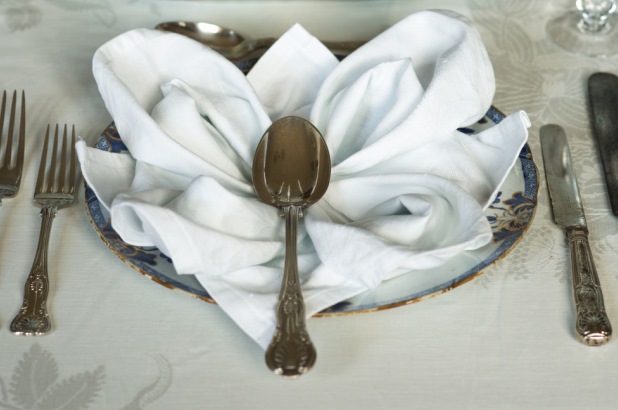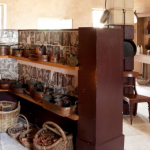We’re all familiar with recipes that call for ‘a tablespoon’ of an ingredient – but what exactly does that mean?
I think I’ve mentioned before that curators are the worst people to watch period dramas with. It’s always “Romans didn’t use forks!” this, and “use a slops bowl!’ that, and my personal bugbear – “That ‘medieval’ chair has a cabriole leg!!” Last week I was texting Jacqui as I watched an old film set in the British Civil War of the 1600s, where the ‘Royal Chef’ was using a very 1800s batterie de cuisine and taking a roast joint out of a very mid-1800s closed range. Cutlery especially has long plagued set designers, especially when it’s a Victorian or Edwardian drama, for this was the age of manic innovation, specialization, and one-upmanship in tableware.
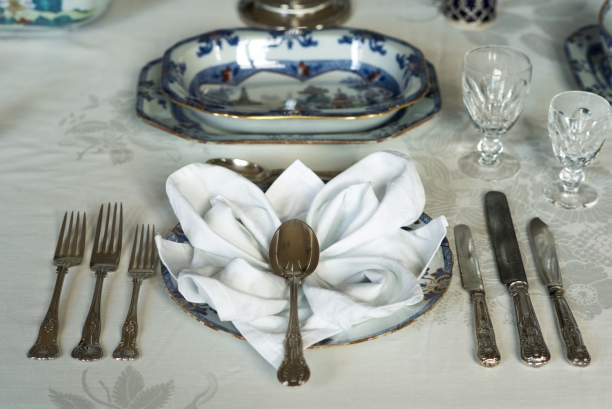
Place setting at Elizabeth Bay House. Photograph ©Nicholas Watt for Sydney Living Museums
When we set a table for a first course at Elizabeth Farm or Elizabeth Bay House a rather large and prominent spoon sits right at the center of each setting. Though used for the soup that was served at or close to the beginning of an A la Francaise or Russe dinner, this is not the spoon that most Western diners would recognise today as a ‘soup’ spoon; still coming to a slight point, quite deep and distinctly oval rather than round, this is the table spoon.
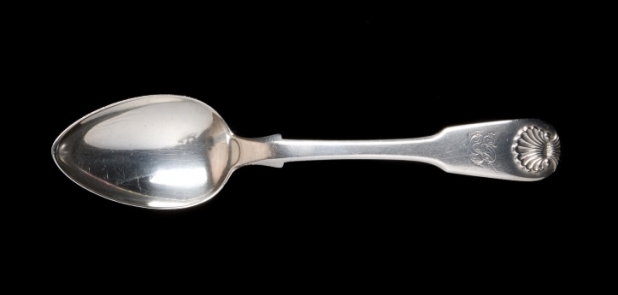
Monogrammed spoon from Rouse Hill House. The Hamilton Rouse Hill Trust collection, Sydney Living Museums
This illustration from an 1850s trade catalogue in Sydney Living Museums’ research library shows tablespoons in different patterns, like the fiddle, shell and thread we looked at recently:
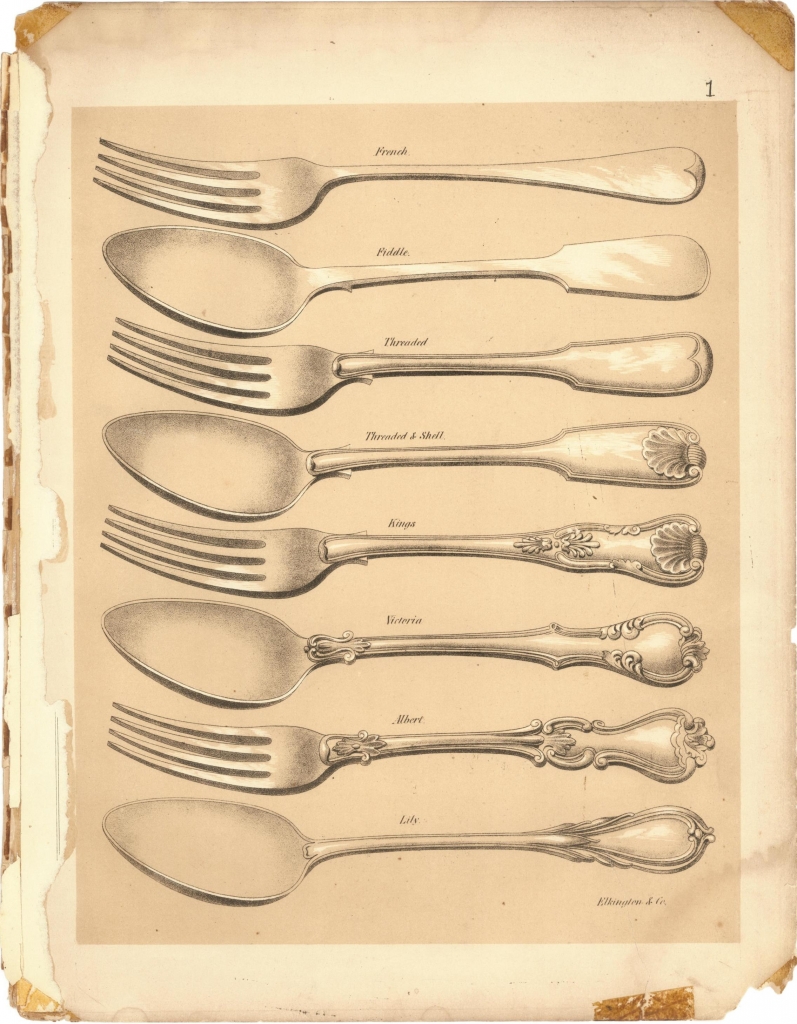
Silverware patterns available from London manufacturer Elkington, Mason & Co. London, 1855. Caroline Simpson Library & Research Collection, Sydney Living Museums.
The tablespoon (often mistaken for a small serving spoon these days as they are rather large) was so ubiquitous a household object that it became a default measurement size for cooking – like a ‘cup’ or a ‘teaspoon’. It could also be heaped or ‘level’ (admittedly, it’s hard to have a heaped spoon of liquid). In actual measurements a standard ‘tablespoon’ is, in Australia, defined as 20 ml of liquid. This highlights again that cooking is typically not an exact science but a personal one, and subject to vagaries of climate, oven performance, you name it.
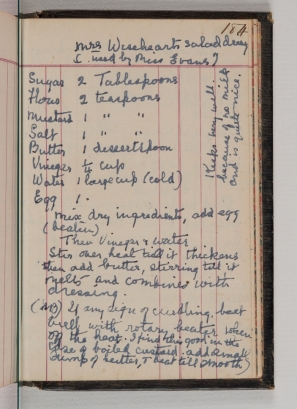
Page from a Meroogal manuscript recipe book using a ‘tablespoon’ as a measure. Meroogal collection, Sydney Living Museums
Enter stage right, the ‘soup spoon’
Soup may be classified into two classes; 1st. Clear, transparent soups, or consommés, of meat, game, or poultry, varying according to the floating garnish added to them. 2ndly, Thick soups, including purees of game, vegetables, etc. …Bouillon is gravy soup, or broth. It may be served au riz – with rice, or a la Colbert – with poached eggs.
Nancy Lake, Menus Made easy, 1903
At some stage after 1860 – I haven’t yet been able to find a firm date or origin, though the phrase appears from around 1883 in Australian papers – a new form of spoon appeared. This had a round head, and was shallower than the deep table spoon. It was designed for thin soups – consommé or bouillon – as opposed to thick soups. A good Mulligatawny for instance would be a messy disaster using one of these spoons. [1]
In the 1903 Menus made Easy there are no less than seventy two variations of a consomme:
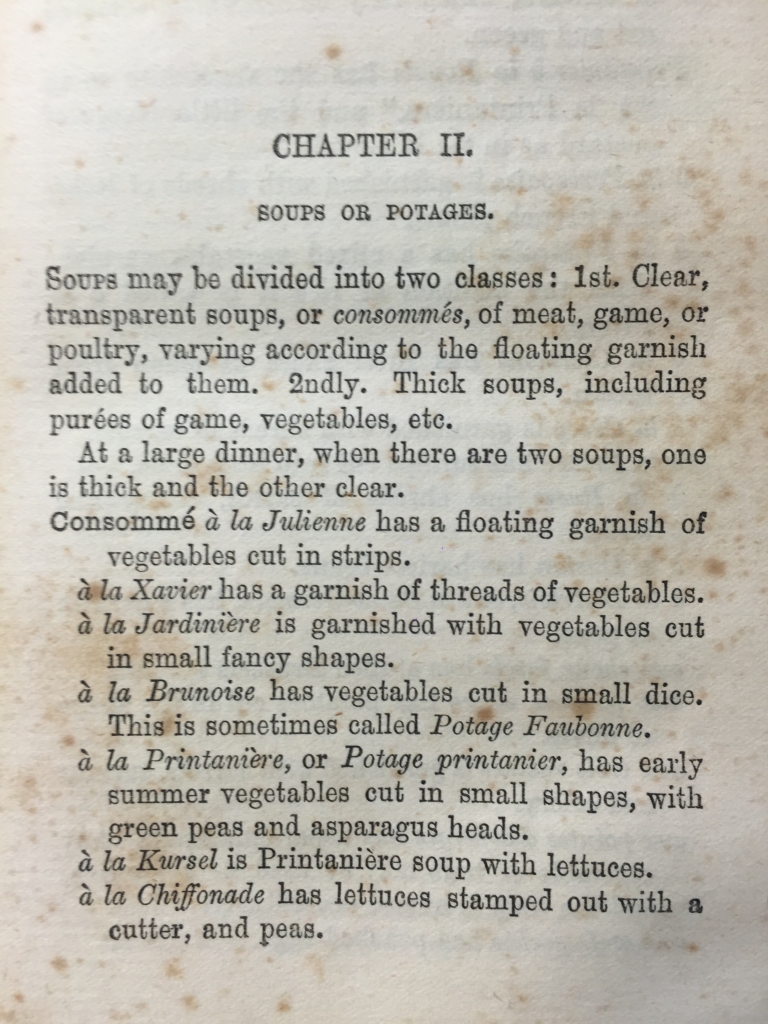
Introduction to soups from Nancy Lake’s ‘Menus made easy’. Frederick Warne & Co., London and New York, 1903
The contemporary Cassell’s Universal Cookery Book [1909] notes, with a soupçon of sarcasm, that
…the apparent number of soups bewilders some people. “It has been estimated’ says Sir Henry Thompson, ‘that the titles which denote these numerous varieties number altogether perhaps not less than five hundred, and proceeding on the principles on which they are produced there appears to be no reason why present list should not be doubled in length. In reality the number of species is very limited, but the slightest addition to a soup having been held sufficient to confer upon it a distinctive name, the idea of complexity and number has been unnecessarily fostered.’ This is the fact in a nutshell.
“The very latest design in soup spoons!”
A NEW SOUP SPOON AND A NEW JOKE.There is comfort in store for the man who for years has made unavailing efforts to bring the point of his soup spoon to his lips exactly between the partings of his moustache, which, as all who peruse the Book of Etiquette are aware, is the only correct way to handle that implement. The same reason which was given by the little boy who refused to give up the core of his apple because ‘there wasn’t going to be no core’ applies to the spoon, for ‘there isn’t any point to the new soup spoon’. A round spoon, not so very dissimilar to a miniature ladle, has been eagerly adopted by those who like fin-de-siècle service, and is thoroughly approved by all who have used it. [The Western Mail, August 5th 1898].
A wander through various trade catalogues and newspapers (hello Trove!) however shows that, if it indeed appeared around between 1860 and 1880 (but where? France? America?), then this new round design still took quite a while to progress past very fashionable tables and begin to penetrate the mass market. The comical quote above also makes a very interesting link between hirsute – moustaches were very in vogue in the late 1800s, and as the owner of a full beard I can tell you that soup can be a challenge – and new culinary fashion. I’ve even seen an American patent from the 1870s for a moustache-guarded spoon, and this gem is from a 1911 paper:
THE NOISELESS SOUP SPOON. A noiseless soup spoon, designed and guaranteed to prevent any whistling noise accompanying the intake. has been Invented by S. H. Campbell, of St Louis. U.S.A. The spoon is made somewhat in the plan of teacups for men with troublesome moustaches.The Globe (Sydney), 7th June, 1911
Looking at the tomes produced by the Sydney-based retailer Anthony Hordern & Sons there is a text reference to the new design in the late 1890s, with an inclusion in price lists, then it seems to vanish again for at least a decade.
In America the Sears Roebuck catalogue no. 116 (1906) illustrated round “Bouillon or soup spoons… the very latest idea in soup spoons“, with boxed sets of six spoons by the American manufacturer William Rogers & Son:
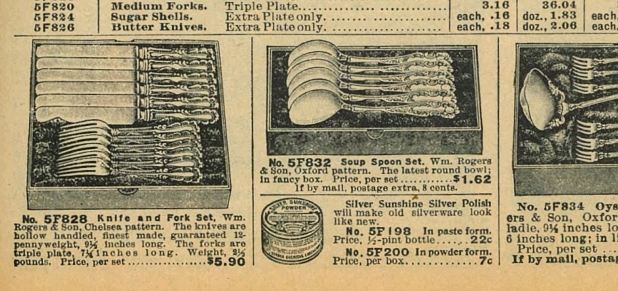
“The latest round bowl” soup spoon; item 5F832 of the Seers Roebuck catalogue for 1906
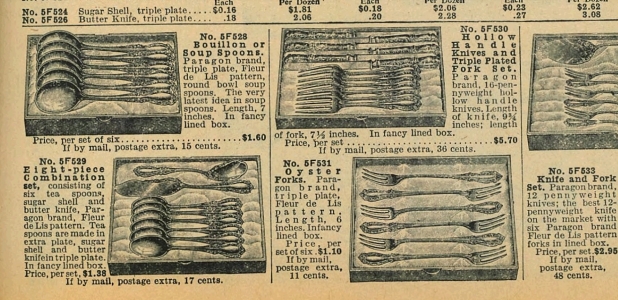
“Bouillon or soup spoons”, item no. 5F528 from the Seers Roebuck catalogue of 1906
They were not being included in the larger full sets of tableware, as seen at the top of this page, but were clearly an optional extra available only in the fancier, more expensive patterns:
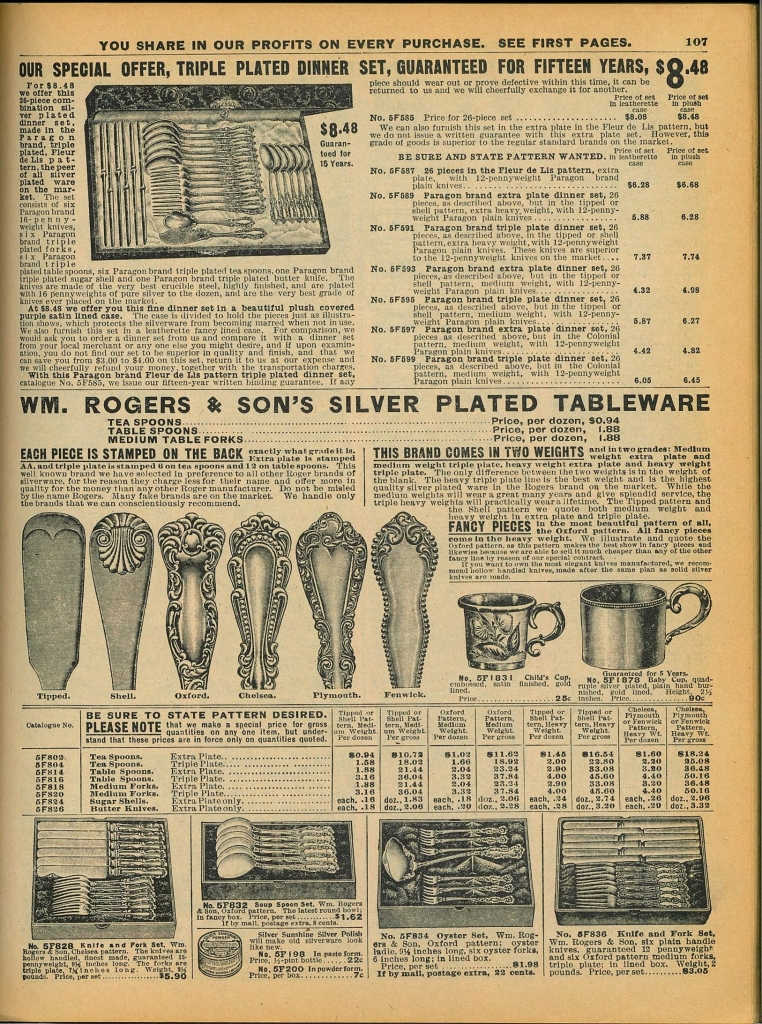
Page of cutlery designs and sets available from the Seers Roebuck catalogue of 1906
While by 1910 advice columns are routinely including soup spoons in a discussion of table settings, it seems likely that, as with the shift from Francaise to Russe dining, it was actually many decades until round soup spoons became everyday. If I may float a theory, could the success of the soup spoon ultimately lie in the rise of tinned, and especially creamed, soup?
No slurping!
Regardless of what shape spoon you use, remember the cardinal rule:
Be sure to make no noise when taking soup, and tilt the plate slightly away from you, if you need to, not towards you. Use the spoon as noiselessly as possible, and take from the side, not from the point.
Complete etiquette for Ladies and Gentlemen. London, Ward, Lock & Co., 1900
Notes
[1]In her ‘Consider the fork: a history of how we cook and eat‘ [Penguin, 2013], Bee Wilson states “Late 19th century America saw an even greater range of new refined spoons: not just rounded soup spoons (first introduced in the 1860s) but distinct spoons for cream soups and bouillon (the latter were smaller).” The date isn’t referenced however.
